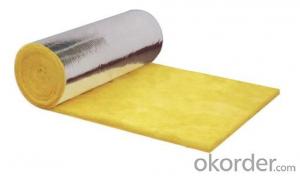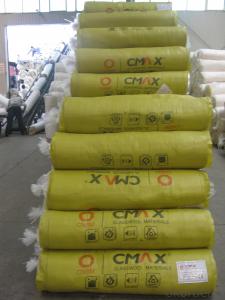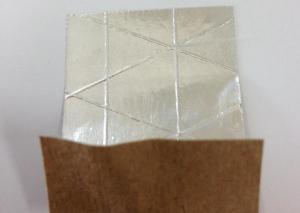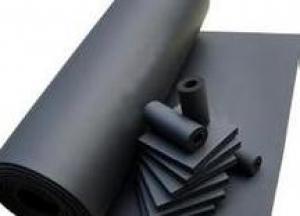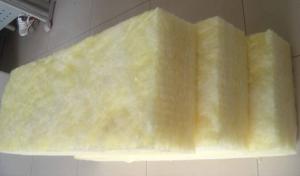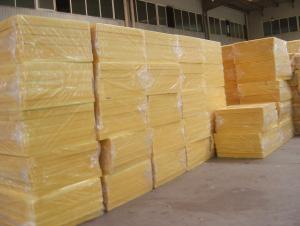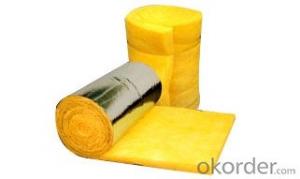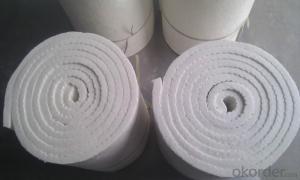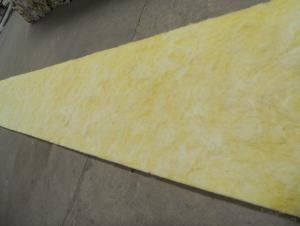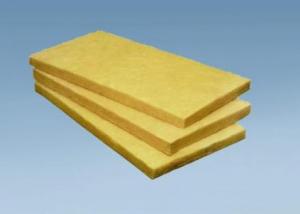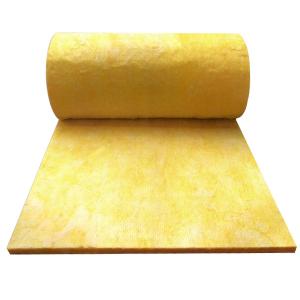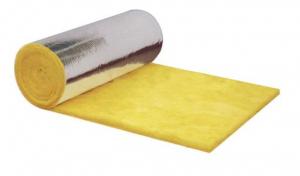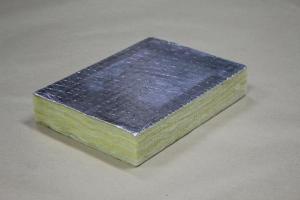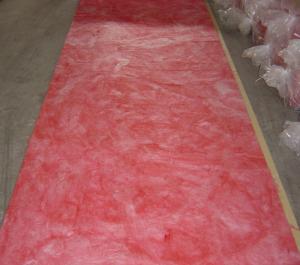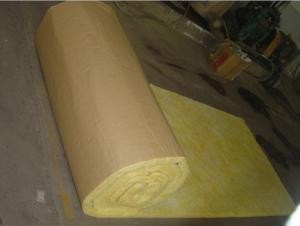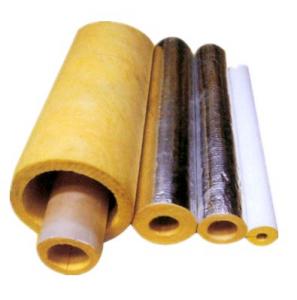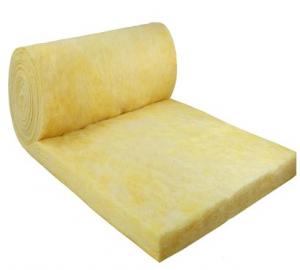Glass Wool Blanket FSK Faced For Insulation Good Quality
- Loading Port:
- Shanghai
- Payment Terms:
- TT or LC
- Min Order Qty:
- 10000 m²
- Supply Capability:
- 10000000 m²/month
OKorder Service Pledge
OKorder Financial Service
You Might Also Like
Production Description
Glass wool blanket is in flexible form for ease of installation over large areas. Both products are available to order with a wide range of density and thickness, and with various types of facing applied.
Standard Size
Item | Unit | Index |
Density | Kg/m3 | 10 - 48 |
Thickness | mm | 25-150 |
Width | mm | 1200 |
Length | mm | 5000-30000 |
Remark:
Other sizes available upon request Facing materials can be applied upon request
Technical Data
Item | Unit | Index |
Average Fiber Diameter | μm | 5-7 |
Water Content | % | ≤1 |
Grade of Combustibility | Non-Combustible Grade A | |
Thermal Conductivity ( 25℃) | W/mK | 0.038- 0.045 |
Reshrinking Temp | ℃ | ≥250 |
Hydrophobic | % | ≥98 |
Moisture Rate | % | ≤5 |
Noise Resistant Coefficient (NRC) | 0.75 | |
Slag Inclusion Content | % | ≤0.3 |
Application
Glass Wool are widely used in public, commercial and residential buildings as well as industrial plants, for applications such as roofing, external wall, partition wall and floating floor to provide fire protection, thermal insulation, acoustic control and condensation control.
DATA
Standard Size Product Board
Size: L x W (mm) 600X1200, Thickness: 40- 100mm
Density: 60KG/M3- 150KG/M3

- Q:What are the advantages and disadvantages of centrifugal glass wool?
- Centrifugal glass wool is a kind of filiform material made by fibrillating and spraying thermosetting resin on the glass in melten state via centrifugal blowing process, which is then conducted thermosetting deep processing to make series products of a variety of uses. The fiber inside centrifugal glass wool is fluffy and staggered, with a lot of tiny pores, which is typical porous sound-absorbing material and has good sound absorption properties. Centrifugal glass wool can be made into wallboard, ceiling, space absorber, etc., which can absorb a lot of sound energy within the room, reducing the reverberation time and indoor noise. Glass wool carpets and sound-absorbing cotton blankets are an ideal kind of sound-absorbing and thermal insulation material, which are widely used in house walls, ship engine room insulation; the computer room, the refrigerated storage constant temperature; noise reduction of various generator rooms and pump rooms; adjustment of stereo cabinet and audio.
- Q:Glass wool and pef air conditioning insulation material, which one is better?
- It's all right to use rubber and plastic, PEF or glass wool, but it is not recommended to use glass wool which has poor waterproof effect, and try to use rubber! Select the appropriate thickness according the local winter temperature, or it will be frozen if it is too thin in winter.
- Q:Which kind of thermal insulation glass wool is the best?
- Glass wool is a good choice. Glass wool can be said centrifugal, so it is also known as centrifugal glass wool, whose thickness and volume-weight have somewhat effect on its sound absorption property. Meanwhile, its sound absorption property is also affected by the cover material and the structure construction. It is necessary to use centrifugal glass wool properly based on its various characteristics like its appearance, fire-resistant capability and anti-aging ability in application to specific buildings. In addition, centrifugal glass wool can be cut freely and it has a stable physical properties. Glass wool is a product made by adopting peculiar centrifugation technology, the technology that fibering molten glass and then processing the added thermosetting resin-based adhesives with environment-friendly formula to manufacture the final products. It is a felty body with elasticity made by stacking of glass fiber whose diameter keeps merely several micrometers. Centrifugal glass wool's detailed technical characteristics include thermal insualtion, excellent shock absorption and sound absorption, and noise absprption capabilities for low and medium frequency noise and vibration noise in particular. It helps a lot in reducing noise pollution and improving the working environment. Glass wool with aluminum foil veneer has a strong thermal radiation resistance as well, which makes it a superb lining material applied in high temperature workshops, control rooms, inner wall of machine rooms, compartments and flattops.
- Q:What kinds of thermal insulation method do the Insulation glass wool insulation materials belong to?
- Glass wool insulation materials are medium and low temperature thermal insulation materials, thus they are generally used in civil and cryogenic pipeline.
- Q:Now what is the latest color steel sandwich board? such as: Foam, stretches, glass wool
- Foam is the mainly material, now with the increase of rock wool, the rock wool can be fireproofing and sound absorption, it may also lay glass wool in the interior of color steel?plate and the function is sound absorption and thermal insulation.
- Q:Choosing glass wool with proper thickness for piping insulation of Dn900 boiler room.
- It depends on the temperature of pipes. Steam pipes with 300 degrees should choose the thickness of 100mm, which is based on the national standard that pipeline’ skin should keep less than or equal to 50 degrees in temperature. While hot water pipes keep 40 to 50mm in this regard.
- Q:Polyester and glass wool, which is better, and why?
- Polyester fiber is environmental and more suitable for home.
- Q:What's the performance and difference of rock wool and glass wool fireproofing material?
- Rock wool and glass wool belong to Class A fireproofing rating, secondly, rock wool can endure high temperature of 800 degrees, glass wool high temperature of 450 degrees, again,unit weight of rock wool is relatively heavier and unit weight of glass wool is lighter, finally, glass wool has better waterproof performance.
- Q:Which one among polystyrene?boards, rock wool boards and glass?wool?boards is the best materials for external wall thermal insulation?
- According to the "Provisional Regulation of Civil Building External Thermal Insulation System and Exterior Wall Decoration Fire Prevention" issued by Ministry of Public Security and Ministry of Housing and Urban-Rural Development, the fireproofing performance of it should not be lower than B2-level. Rock wool board and glass wool are both accessible if taking cost into consideration. The combustion performances of polystyrene?boards are generally C- and B1-level, while the combustion performance of external wall thermal insulation materials should be A-level.
- Q:What are the differences between glass asbestos and glass?reinforced?plastics?
- Asbestos also known as "mountain cloth" is a commercial term that refers to silicate mineral products with high tensile strength, high flexibility, heat resistance, and chemical corrosion, electrical insulation as well as spinnability. It is the general term of natural fibrous silicate minerals. It includes two categories, a total of six kinds of minerals(serpentine asbestos, hornblende asbestos, actinolite asbestos, antholite asbestos, amosite asbestos, tremolite asbestos, etc.) Asbestos are made of fiber bundles, while fiber bundles are composed of long and narrow fibers which can be separated from each other. Asbestos, with properties of highly fire resistance, electrical insulation and thermal insulation, are important fireproofing, electrical insulation and thermal insulation materials. Glass?reinforced?plastics(FRP) also known as GRP, are fiber-reinforced plastics which generally refers to the matrix of glass fiber reinforced unsaturated polyester, epoxy resin and phenolic resin. Reinforced plastics, with glass fiber or its products as reinforced materials, refer to glass fibre reinforced plastics or glass?reinforced?plastics. Due to the different varieties of resin, there are polyester glass?reinforced?plastics, epoxy glass?reinforced?plastics, and phenolic aldehyde glass?reinforced?plastics. They are light and rigid, non-conducting, and corrosion-resistant. They have high mechanical strength, low recycling rate. Machine parts, cars and Ship hulls made of steel can be replaced by them.
1. Manufacturer Overview |
|
|---|---|
| Location | |
| Year Established | |
| Annual Output Value | |
| Main Markets | |
| Company Certifications | |
2. Manufacturer Certificates |
|
|---|---|
| a) Certification Name | |
| Range | |
| Reference | |
| Validity Period | |
3. Manufacturer Capability |
|
|---|---|
| a)Trade Capacity | |
| Nearest Port | |
| Export Percentage | |
| No.of Employees in Trade Department | |
| Language Spoken: | |
| b)Factory Information | |
| Factory Size: | |
| No. of Production Lines | |
| Contract Manufacturing | |
| Product Price Range | |
Send your message to us
Glass Wool Blanket FSK Faced For Insulation Good Quality
- Loading Port:
- Shanghai
- Payment Terms:
- TT or LC
- Min Order Qty:
- 10000 m²
- Supply Capability:
- 10000000 m²/month
OKorder Service Pledge
OKorder Financial Service
Similar products
New products
Hot products
Related keywords

